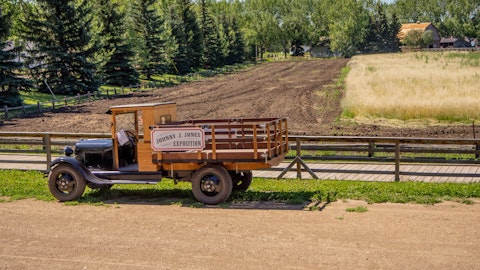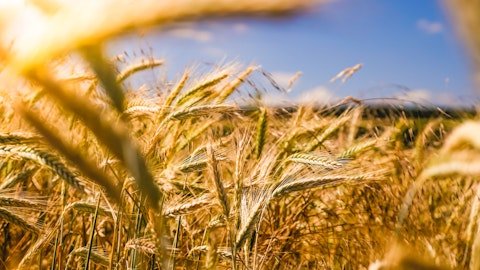Understanding that it wasn’t a linear, sort of, path between where we were last year and where we’re going to be in fiscal ’24. And that was mainly the reason why we never guided for fiscal ‘23, because we knew that the business model transition might be a possibility. And in doing so, we were going to discontinue some first generation materials. And that might affect our gross profit for the period as indeed you saw it happened in the current quarter. So we would have preferred for this to be a more linear process. But the reason why we didn’t guide to fiscal year ‘23 and we guided to fiscal year ‘24 is just because the current transition was something that was possible. And that is basically the main reason why we are announcing this today.
But from, sort of, a performance of the varieties viewpoint, from an availability of inventory viewpoint, there’s nothing that makes us reconsider the current guidance.
Ben Klieve: Okay, very good. That’s good to hear. Last question for me and then I’ll get back in queue. With so many major dynamics competing against each other right now between, especially with sounds like a hopeful transition and weather patterns in Argentina, the industry destocking and then year-over-year looking at how kind of wild your first and second quarters were of fiscal ‘23 relative to traditional seasonality trends? Can you just kind of give us any kind of rough expectation that you have looking at the first quarter and second quarter of fiscal ‘24, you know, particularly relative to where, you know, where your business was last year?
Federico Trucco: Well, I mean, that’s a tough one. Obviously fiscal — the first fiscal quarter of last year was a very good quarter, but not so the second fiscal quarter of last year. So it’s probably easier for us to do better in the second quarter than what it might be in the first quarter. But we’re very well positioned to deliver growth. I think the inventory situation is not done, but it’s almost done. I think the type of products that we sell are probably less affected by those dynamics, particularly in the U.S. and Brazil. And farmers need to buy inputs eventually to sort of go into the summer season. So a lot of that has been delayed, because of the drought situation and probably farmers waiting until later in the season to make their decisions.
So we expect to be able to continue to deliver the type of performance we’ve shown on average over the last two years, three years or so. But obviously that will be more challenging in the first fiscal quarter and less challenging in the second fiscal quarter just because the numbers we’re comparing to are very different in that respect.
Enrique Lopez Lecube: Yes, I fully agree with Federico, Ben and just to sort of like add a bit more color in that. Remember that we always tend to look at sort of like the first-half of our fiscal year altogether, because there’s that sort of like back and forth in revenues between Q1 and Q2, depending on what’s the pace of the season in Argentina and Brazil mostly. So I think that we are, sort of, like set for a year where we should be able to deliver growth and the type of growth that we target overall. And also remember that we tend to look at our performance on an annual basis. And I think that this year is a very, very good example of that, where you saw some quarters down, some quarters up, but on a sort of like an overall basis, we were up.
And that’s what we’re targeting for. But that first-half of the year I think the things are getting in line for that to be a good season. And the comparable season last year was a very good one in the first quarter, a very bad one in the second quarter. So we’ll see how it all turns out to be.
Ben Klieve: Got it. Okay, very good. Well I appreciate you guys taking my questions. I’ll get back in queue.



